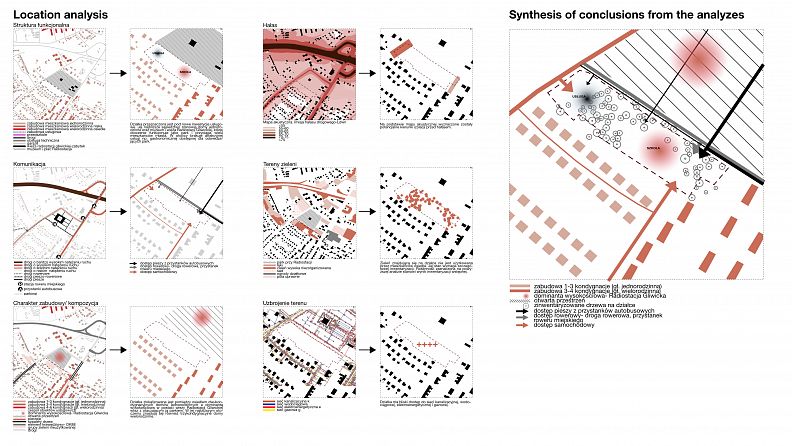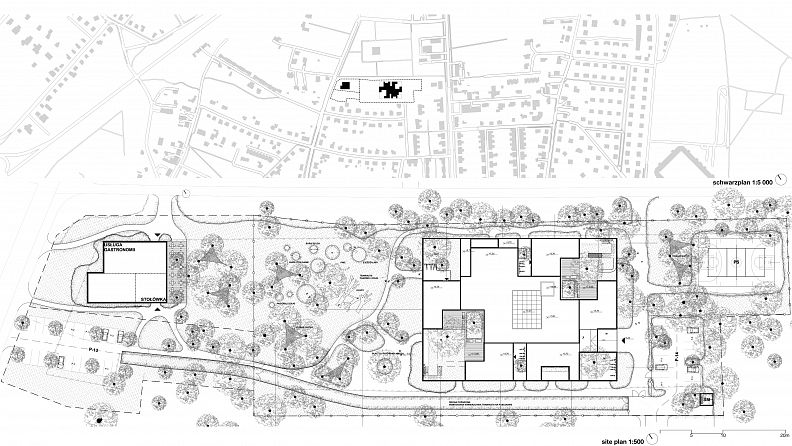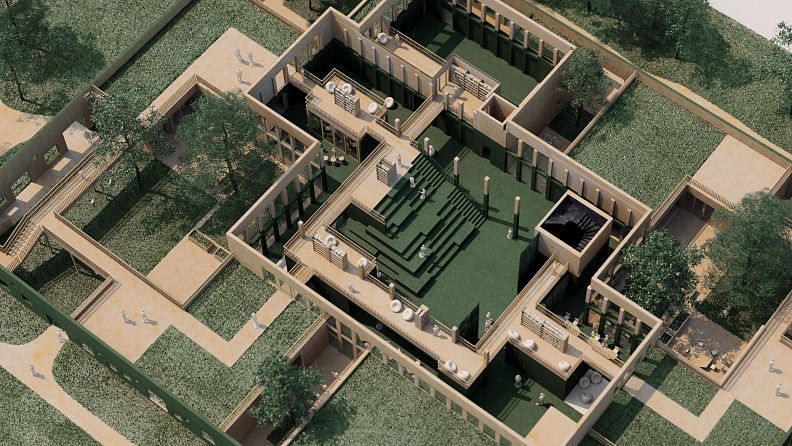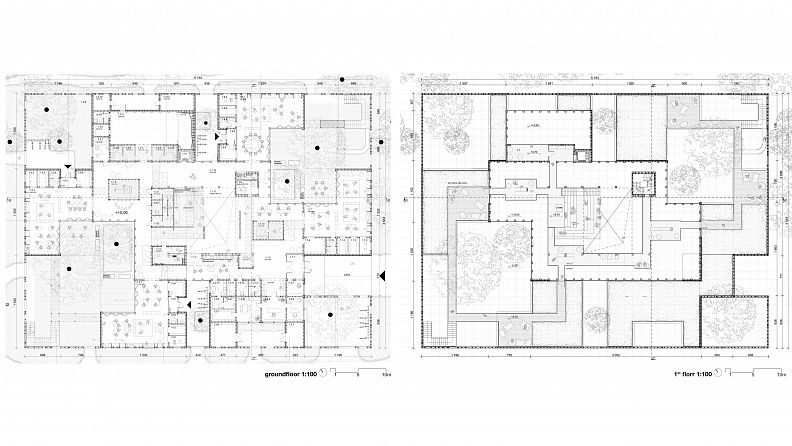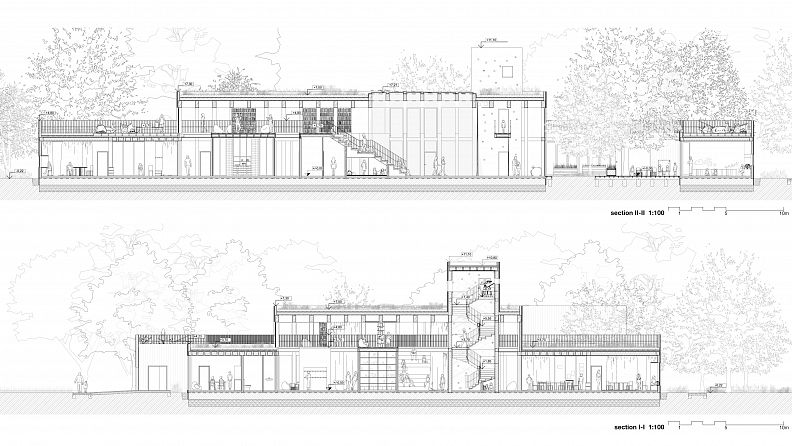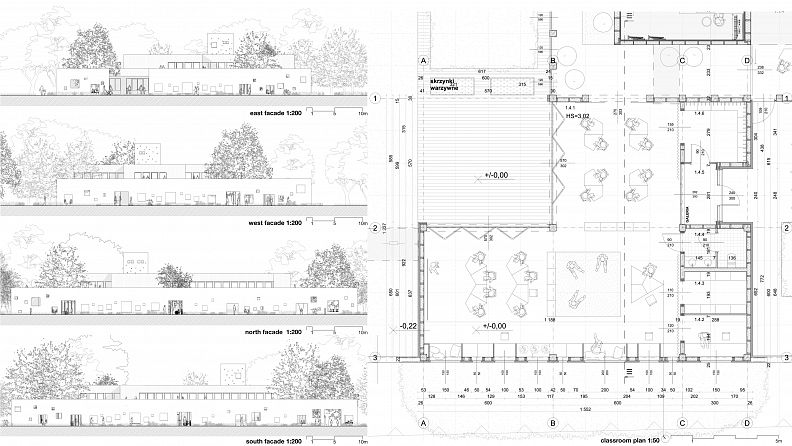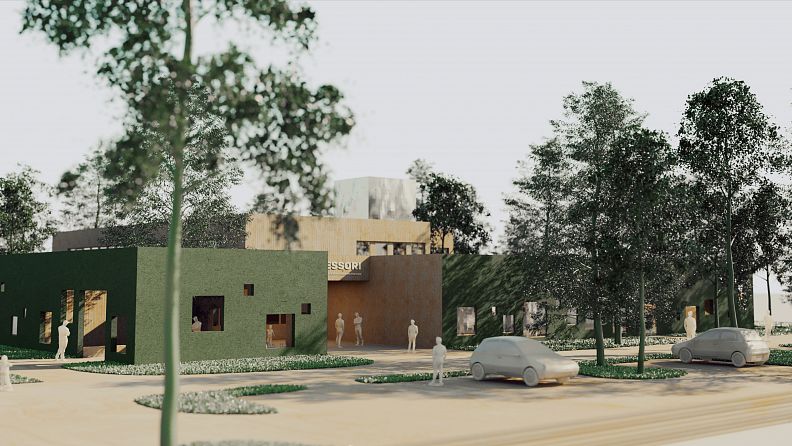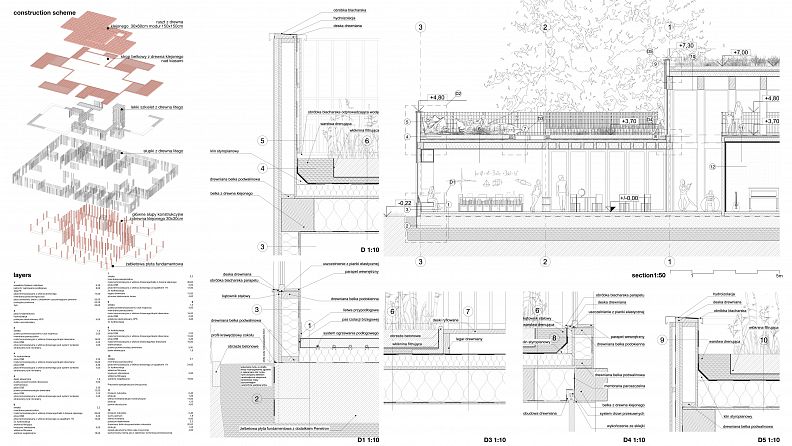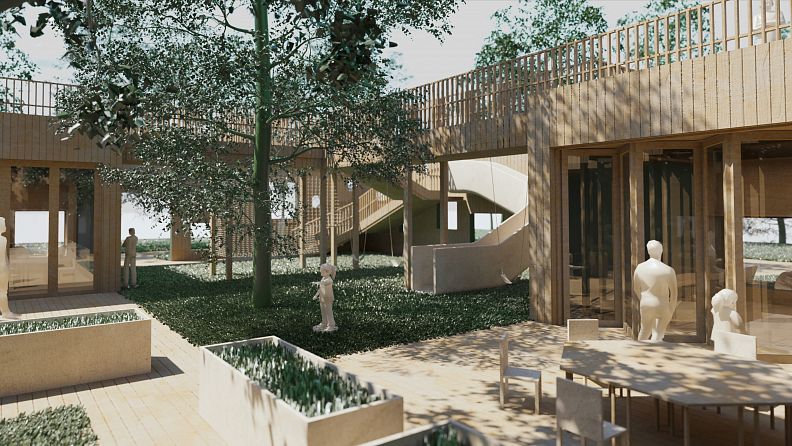School as a development stimulating environment. Architecture of alternative teaching methods based on the montessori pedagogy.

Project idea
The school building is one of the first public spaces we come into contact with. As children, we feel it most intensely and intuitively, extracting information about the world from it. The traditional form of the school does not fully meet the needs of today's world. Its role should not be to provide knowledge but to create the conditions to seek it, build social relationships and experience the world.
Initial analyses of the topic have focused on alternative education methods. One of these is Montessori pedagogy which treats the school building itself as an important element of learning. It is characterized by mixed age groups with no lesson plans or school bells. The students decide for themselves what they are going to do at this time. This is why they enjoy learning and develop self-awareness.
The idea behind the project is to create a school as a place to learn not to be taught. This space should follow the real needs of young people. (Drawing from Yu-Fu Tuan's considerations in "Space and Place") Create both "safe" places and "unexplored" spaces and define the relationship between them.
Project description
The method of creating the architectural concept emerged from confronting the needs of Montessori pedagogy with the findings of literature research in the field of environmental psychology.
The spatial arrangement is based on the hierarchy of space. Transitions between zones with different levels of intimacy and accessibility are accentuated by changes in the size and height of rooms, lighting, or materials.
The functional and spatial arrangement
The central part is an open space with wide sitting stairs. There is a skylight above this part making it the highest and brightest part of the building.
The exploration space is created by specialized workshops such as those for music or ceramics, freely arranged in the common space around the central part.
There are many nooks and crannies between its walls. The rooms have mezzanines connected by bridges. The space created in this way is intended to stimulate the desire to discover the world. It also acts as a buffer between the social and noisy center and the quiet classrooms.
Classrooms are rooms with the lowest ceilings and are also the most private and personal place. It is supposed to evoke a sense of security and belonging. Each classroom has a separate entrance, checkroom, and bathroom. The L-shaped floor plan divides the space into three zones and creates an observation field.
The classroom terraces are closing an L-shape into a square. After folding, the door terraces become an integral part of the rooms.
The outdoor rooms were created by separating the school building from the wild garden with an open working wall filled with square openings.
A freely landscaped garden located outside of the outline of an openwork wall is being an external exploration zone.
Technical information
The walls of urban interiors are finished with wood, while the openwork wall surrounding the building from the outside, with green plaster. As a result, seen from the outside, the building gives an impression of hovering over the surrounding vegetation. After entering the atrium, it becomes visually embedded in the ground.
The structure of the building is a combination of the main structure in the form of a frame and a waffle slab made of laminated timber with secondary elements in a light frame structure made of solid wood. The materials used in the project are mainly of natural origin. The structure of the walls and slabs were insulated with panels and soft wood fiber mats. The façade is finished with a combination of timber and a green-colored structural plaster. The interior is finished with birch plywood and natural green linoleum. The extensive green roof was planted with a mixture of flower meadows.

